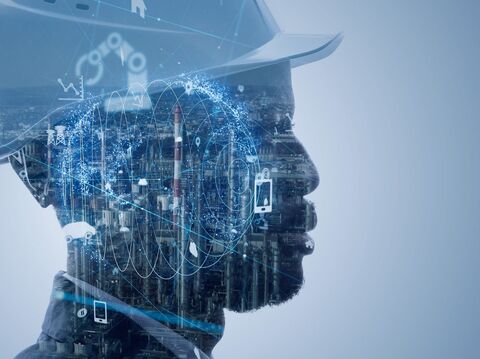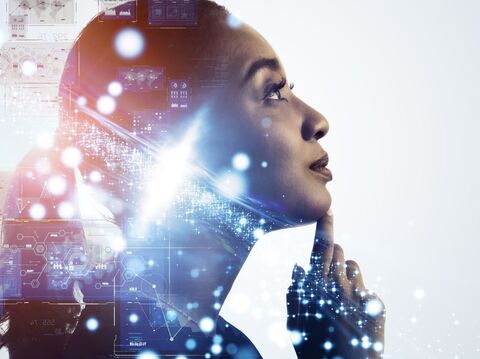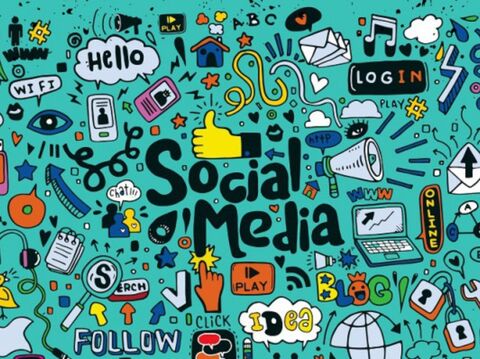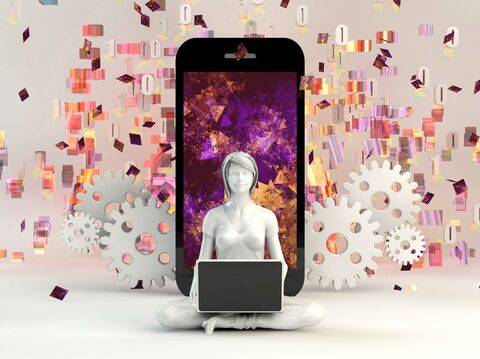Immersive Technology in Education Future of Learning
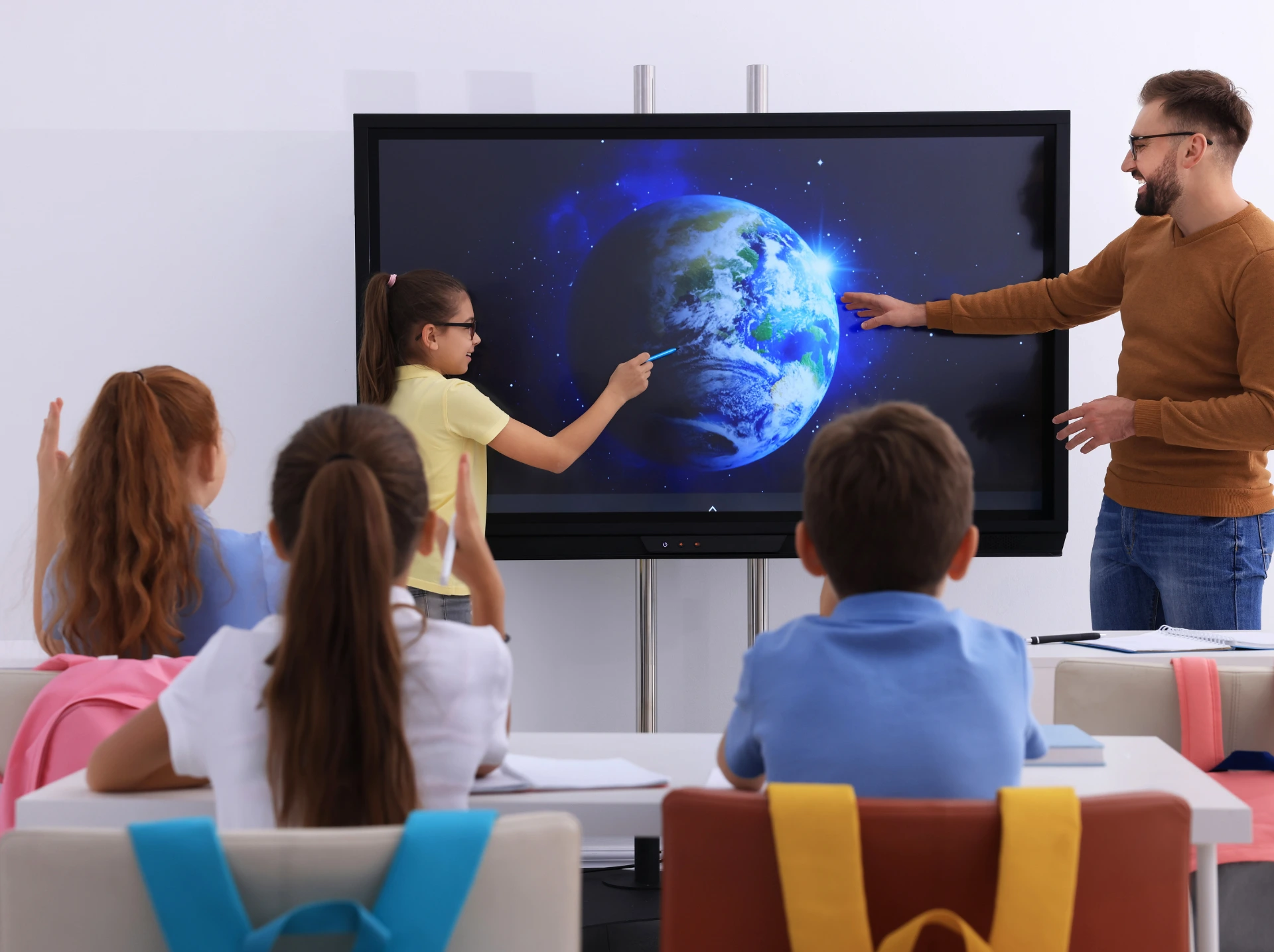
Imagine stepping into an ancient Egyptian pyramid or exploring the human body from the inside. Immersive technology makes these experiences possible. It is changing how we learn by creating engaging and interactive environments.
This article delves into how virtual reality (VR), augmented reality (AR), and artificial intelligence (AI) are transforming education. We'll further discuss how it enhances learning experiences and improves engagement.
What is Immersive Technology?
Immersive technology includes Virtual Reality (VR), Augmented Reality (AR), and Artificial Intelligence (AI). These tools make learning more fun and interactive by creating simulations, showing complex ideas visually, and giving personalised feedback.
Benefits of Immersive Technology
- Better learning – Helps students understand and remember things more easily
- More fun – Makes learning feel like a game or real-life experience
- Interactive – You can move around, explore, and learn by doing
- Personalized – Adapts to different learning styles and speeds
- Accessible – Can help people with different needs learn in new ways
- Convenient – Practice anytime, anywhere, without real-world risks
Immersive Technology Types and How it Works?
There are 3 types of Immersive Technologies:
- Virtual Reality (VR)
- Augmented Reality (AR)
- Artificial Intelligence (AI)
1. Virtual Reality (VR)
Virtual Reality uses special headsets to create a 3D world that feels real. When students wear the headset, they can look around, move their hands, and feel like they are in a different place. This is called an immersive experience, and it shows the role of VR in making learning more engaging and interactive.
In education, VR can take students on virtual field trips to places they’ve never been, like ancient Egypt or the surface of Mars.
It also helps them understand subjects like history or science by bringing the lessons to life—another great example of the role of VR in transforming how students experience education.
2. Augmented Reality (AR)
Augmented Reality (AR) is different from VR because it adds virtual things to the real world. For example, if you're looking at a book through your smartphone, AR can make a dinosaur pop out of the page in 3D.
In classrooms, AR can make learning more exciting by turning regular textbooks into interactive experiences.
This helps students understand tough subjects like physics or biology by seeing things in 3D, which makes it easier to grasp.
3. Artificial Intelligence (AI)
Artificial Intelligence (AI) is like a smart assistant for learning. It uses data to understand what students need help with and can adjust lessons to fit their personal learning style.
If a student is struggling, AI can slow down the pace and provide extra practice. If they’re doing well, it can make the lessons harder.
AI also gives instant feedback, which helps students learn faster. It's like always having a personal tutor available.
Transforming Education Industry with VR, AR, and AI
Immersive technology in education uses VR, AR, and AI to reshape the industry. Each offers unique benefits, making learning more interactive and impactful, and transforming education.
1. Virtual Reality (VR) in Education
Immersive virtual reality transforms standard classrooms into interactive 3D spaces. Let's see how VR influences education:
-
Realistic Simulations: VR lets students explore lifelike settings. They can walk through ancient sites or examine virtual creatures. This method improves understanding of complex topics.
-
Safe Learning Environments: VR creates a secure area for skill practise. Students can conduct surgeries or relive historical events without real-world risks. This boosts their confidence.
-
Enhanced Engagement: Immerses students in their studies, improving their attention and increasing motivation. They tend to focus better and show more interest.
-
Global Classroom Experiences: VR connects classrooms across the globe, promoting diversity and inclusiveness in learning. Students can explore different cultures and viewpoints.
-
Personalised Learning Paths: VR for education customises learning experiences based on individual needs, enhancing results and satisfaction. Students get to progress at their own pace and style.
2. Augmented Reality (AR) in Education
Augmented Reality (AR) enhances real-world environments with digital data. It makes physical spaces interactive. Here's how AR transforms education:
-
Interactive Textbooks: AR animates textbooks, including scanning pages with a device that brings images to life. This adds fun to learning and makes it more engaging.
-
Enhanced Visualisations: AR clarifies complex subjects like chemistry and physics. Students handle 3D models, simplifying tough ideas that improves their retention of knowledge.
-
Accessibility: AR tools help overcome language and physical barriers that provide visual aids and translations, boosting comprehension for all learners. This makes education more accessible for all.
-
Instant Information: Pointing a device at an item delivers immediate details like quicker and deeper learning. Students can explore and absorb information at their preferred speed.
-
Collaborative Learning: AR fosters team learning by allowing students to work with digital elements in their actual surroundings. This enhances their teamwork and communication abilities.
3. Artificial Intelligence (AI) in Education
Artificial Intelligence (AI) tailors and advances learning. It analyses data and adapts to needs. Here’s how AI innovates education:
-
Personalised Learning Experiences: AI evaluates student performance and customises content to make learning more effective. Learners receive lessons that match their pace.
-
Automated Administrative Tasks: AI handles grading and tracks attendance. This saves time for educators, letting them focus more on teaching and interacting with students.
-
Real-Time Feedback: AI gives immediate reactions to assignments and tests for students to see their errors right away. They get the opportunity to change their study methods for better outcomes.
-
Predictive Analytics: AI uses predictive analysis to predict student success and spot early signs of learning issues. This allows educators to focus extra attention where it's needed most.
-
Enhanced Tutoring: By engaging in conversational dialogues and providing context-based answers, AI tutors interact with students through advanced language processing. They offer customised help extensively, ensuring every student gets necessary assistance.
Immersive Technology Examples
Immersive technologies like VR, AR, and AI are changing the way we learn. Here are some real-life examples that show how these tools are improving education.
Case Study 1: Medical Training with VR
Stanford University uses Virtual Reality (VR) to train medical students. Instead of practising on real patients, students perform surgeries in a virtual environment. This helps them gain experience without any risk.
-
Skill Building
VR allows students to perform complex surgeries in a safe space. They can practise as many times as they need until they master the procedure. This builds their confidence and prepares them for real-life surgeries.
-
Fewer Mistakes
By practising in a virtual environment, students make fewer mistakes when they operate on real patients. They get the chance to correct errors in the simulation, which leads to safer surgeries in real life.
-
Confidence Boost
Practising regularly in VR helps students feel more confident about their skills. They are less nervous during actual surgeries because they know they've already practised thoroughly.
-
Affordable and Accessible
VR reduces the need for expensive equipment and physical resources. Schools save money, and students can access training from anywhere in the world. This makes high-quality training available to more students.
Case Study 2: AR in K-12 Classrooms
Zspace is a company that offers Augmented Reality (AR) experiences to K-12 students. With AR, students can explore 3D models in subjects like biology, physics, and chemistry. This makes learning more fun and engaging.
-
Better Understanding
AR makes it easier for students to understand complex ideas. For example, instead of only reading about the human heart, they can see a 3D model and explore how it works.
-
Hands-On Learning
Students can interact directly with these 3D models. This makes learning more exciting because they are not only listening to a lecture – they are actively participating. Teachers report that students are more engaged and eager to learn.
-
Increased Participation
Because the lessons are more interactive, more students want to join in. This leads to better participation and deeper interest in the subject.
Case Study 3: AI-Powered Learning Platforms
Duolingo is a popular app that uses Artificial Intelligence (AI) to help people learn new languages. The app adjusts lessons based on each user's progress, ensuring that everyone gets a personalized learning experience.
-
Personalized Lessons
AI tracks each student's performance and adjusts the difficulty of lessons accordingly. If a student struggles with a particular concept, the app provides more practice in that area. This helps students focus on what they need to improve.
-
Real-Time Feedback
AI gives instant feedback, making learning smoother and more enjoyable. If a student makes a mistake, the app immediately adjusts the next lesson to help them correct it.
-
Motivation Through Games
Duolingo uses game-like features such as points, badges, and leaderboards to keep students motivated. This makes learning feel more like playing a game, which encourages students to keep practising.
Future of Education Technology
Education's future is intertwined with technology. The Metaverse is becoming a new future of education technology with virtual classrooms where students globally can learn together. This could revolutionise distance learning by fostering cultural exchange and inclusivity, enabling students to gain diverse perspectives.
The Metaverse offers rich, engaging experiences like virtual field trips to historical sites, collaborative projects in 3D spaces, and interactive science labs. Consequently, learning becomes more immersive and interactive.
Teachers can also create tailored virtual spaces. For example, a virtual replica of the Roman Colosseum can be used to teach history. These spaces meet specific learning goals and can adapt to any subject.
Wrapping Up
Immersive technology is revolutionising education, with VR, AR, and AI make learning more engaging, interactive, and personalised. These technologies offer unique experiences. As we move forward, these tools will grow in education. They will offer endless possibilities for students and educators.
Immersive technology in education is not just a trend. It is the future. It offers tools and experiences for different learning styles. This makes education more inclusive and accessible. As we explore these possibilities, we must use these technologies fully. They can benefit learners of all ages and backgrounds.
Explore GrowthJockey to integrate immersive technology in education, transforming teaching and learning.
Immersive Technologies FAQs
Q1. How can immersive technology address different learning styles?
Ans. Immersive technology suits various learning styles. VR and AR offer visual and hands-on content. This helps visual and kinaesthetic learners. AI adapts to individual preferences. It provides auditory or textual feedback. Every student benefits, regardless of their learning style.
Q2. What role does immersive technology play in remote learning
Ans. Immersive technology makes remote learning engaging. VR creates a virtual classroom. This makes lessons feel personal. AR provides interactive exercises for home use. AI offers personalised feedback. It adapts lessons to student needs. This makes remote education more effective.
Q3. How does immersive technology prepare students for future careers?
Ans. Immersive technology gives practical skills for future careers. VR and AR simulate real-world scenarios. Students practice skills in a safe environment. AI teaches problem-solving. It helps students adapt to learning. These tools prepare students for the workforce. They get ready for future job demands.



